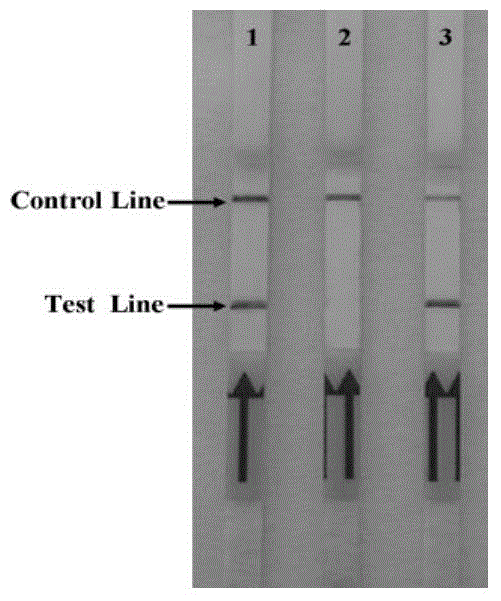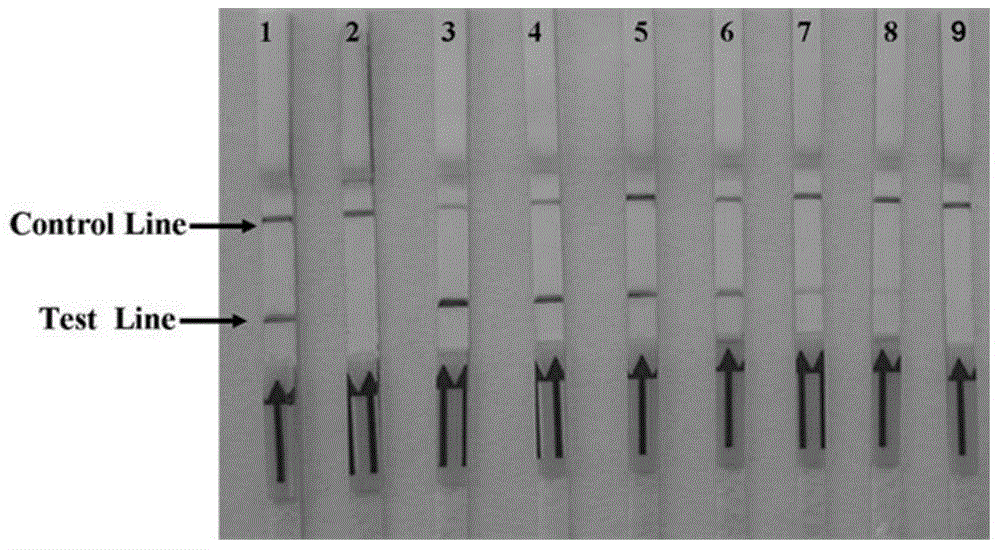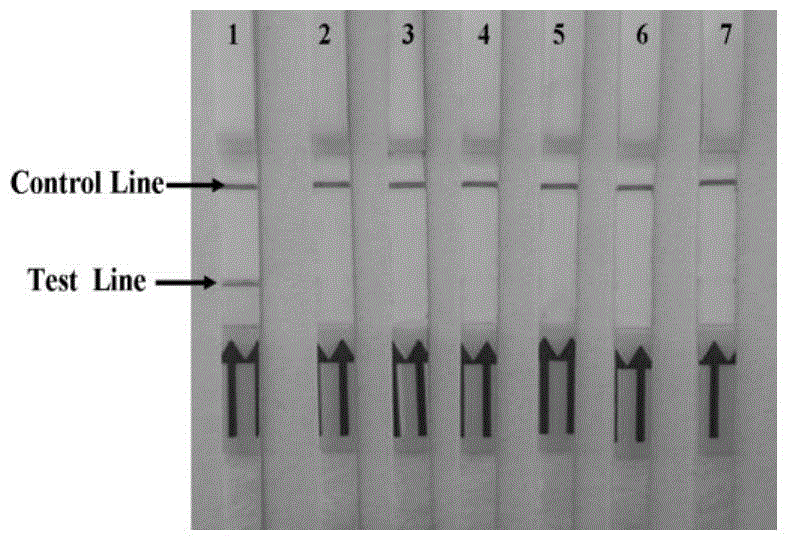Primer, probe and kit for detecting bovine viral diarrhea virus
A technology for bovine viral diarrhea and detection reagents, applied in the determination/testing of microorganisms, biochemical equipment and methods, DNA/RNA fragments, etc., to achieve high sensitivity, strong specificity, and high sensitivity
- Summary
- Abstract
- Description
- Claims
- Application Information
AI Technical Summary
Problems solved by technology
Method used
Image
Examples
Embodiment 1
[0042] Embodiment 1: Design and screening of primers and probes
[0043] Effective design of primers and probes is the most critical link in determining the success of experiments. However, RPA technology is in its infancy, and there is no dedicated primer and probe design software, nor is there a large amount of data to provide a basis for its primer design principles. At present, in the experiment, it is necessary to design multiple pairs of primers from both ends of the target sequence for optimization and screening. The primer design requirements of this technology are extremely strict, and the substitution or increase or decrease of individual bases will have an important impact on the experimental results. The following factors usually need to be considered in the design: (1) The length of the primer is required to be 30-35bp, the length of the probe is required to be 46-52bp, and the GC content is 40%-60%. Repeat sequence. (2) Detection of amplified fragments less tha...
Embodiment 2
[0049] Example 2: Establishment and investigation of laboratory BVDV RPA amplification detection method
[0050] 1. Establishment of laboratory BVDV RPA amplification detection method
[0051] 1.1 Synthesis of BVDV genome cDNA
[0052] Take 200 μL of cell culture virus supernatant, refer to the instructions of the viral RNA extraction kit, extract virus RNA, and dissolve it in 50 μL of RNAase-free water. According to Fermentas RevertAid TM First Strand cDNA Synthesis Kit instructions for RT-PCR reaction to obtain BVDV cDNA.
[0053] 1.2 RPA amplification
[0054] In the present embodiment, the PRA method is used to amplify the specific sequence of BVDV, and the specific steps are:
[0055] (1) Add 2.1 μL (10 μmol / L) of the upstream and downstream primers designed in Example 1, 0.6 μL (10 μmol / L) of the LF probe, 29.5 μL of Rehydration buffer, and 2 μL of template DNA into the centrifuge tube. 2 O was made up to a volume of 47.5 μL, vortexed and centrifuged briefly; see Ta...
Embodiment 3
[0072] Embodiment 3: Clinical sample BVDV detection
[0073] 1. Synthesis of BVDV genome cDNA
[0074] Take 16 samples of diarrhea feces samples and 3 parts of negative samples identified as BVDV-positive cattle by BVDV fluorescent quantitative RT-PCR established in this laboratory, and use the method of "1.1 Synthesis of BVDV genome cDNA" in Example 2 to synthesize BVDV genome cDNA , for RPA template amplification.
[0075] 2. Lateral flow chromatography RPA detection of clinical samples
[0076] The genomic cDNAs of the prepared clinical stool samples were respectively used as templates, and amplified according to the RPA detection method described in step 1 in Example 2. After RPA amplification, the hybridization product was displayed on the lateral flow chromatography test strip, and the control band and the detection band were displayed in the reaction area of the test strip of 16 samples, indicating that 16 clinical samples contained BVDV, and the results were consis...
PUM
 Login to View More
Login to View More Abstract
Description
Claims
Application Information
 Login to View More
Login to View More - R&D
- Intellectual Property
- Life Sciences
- Materials
- Tech Scout
- Unparalleled Data Quality
- Higher Quality Content
- 60% Fewer Hallucinations
Browse by: Latest US Patents, China's latest patents, Technical Efficacy Thesaurus, Application Domain, Technology Topic, Popular Technical Reports.
© 2025 PatSnap. All rights reserved.Legal|Privacy policy|Modern Slavery Act Transparency Statement|Sitemap|About US| Contact US: help@patsnap.com



